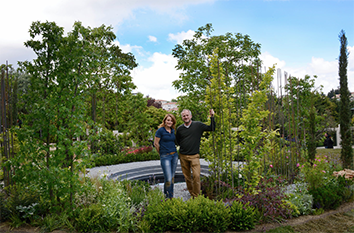March 2018
Countrywide Triumphs
09/03/18 11:59 Filed in: Property

Countrywide Triumphs with 110 Branches Shortlisted for the ESTAS Awards
Countrywide, the UK’s largest property services group, has had 110 branches shortlisted for the ESTAS Awards. A record achievement for Countrywide, the ESTAS highlight the best estate agents in the UK as voted by customers.John D Wood & Co. Esher office has been shortlisted in the South East (Surrey) region and will attend the 15th annual ESTAS ceremony at the Grosvenor House Hotel in London on Friday 20th April. Phil Spencer, the TV property expert, will present the awards in front of over 1,000 of the UK’s most esteemed property professionals.
Doug Parks, Associate of Esher branch says “We are delighted to have been shortlisted for this year’s ESTAS and see this as a reflection of our team’s hard work and our commitment to providing unrivalled customer service. Customers are at the heart of our business and we are proud to have this recognised at these prestigious awards. We are really looking forward to the awards ceremony on 20th April!”
About Countrywide plc
Countrywide is the UK's largest integrated property services Group, including the largest estate agency and lettings network. Countrywide’s network of expertise combining national scale and local reach helps more people move than any other business in the UK and is structured around four key business units: Retail, London, B2B and Financial Services.
Website: www.countrywide.co.uk
Blurring the lines
01/03/18 12:57 Filed in: Gardening | Alladio Sims
Emanuela Alladio of Alladio Sims Garden Design asks what makes a garden a unique space? Here she explains why location, the brief, the budget and a garden’s peculiar series of opportunities and constraints all play a very important part in the mix.
Perhaps more than anything else one of the key aspects that can give a garden or a space its own unique identity is its edges and boundaries, and the way in which they define and constrain the space and flow within and the relationship with what’s around it.We often wonder how best to blur the edges between building and garden, and between ‘managed’ garden and ‘wilder’ landscape. And as garden designers we constantly make decisions that manipulate those same edges and redefine them – by blurring them or ‘greening’ them we try to make them disappear, hiding fences and walls; by using indigenous plants we disguise the edge between private garden and wilder location; by creating hybrid spaces we blur the boundaries between house and garden and introduce furniture and other objects that remind us of the indoor, but invite us to be outside.
Some of the gardens we design can only be described through their boundaries and edges, starting with the drama of a window or a pergola leading the eye to the far end – an edge concealed and turned into an intriguing focal point. We like to introduce internal boundaries and edges too, by framing views and forcing us to take a break, by creating different ‘rooms’ with screens and embellishing them with plants, and simply by working with what’s already there, bringing new and old boundaries and edges together, mixing new solutions and restoring or blurring old ones.
Boundaries and edges are there to challenge our senses and our behaviour, and when we design we like to consider ways in which we can do so in an unexpected manner, creating little surprises along the path, pushing us to stop and think and become emotionally involved with the space we find ourselves in.
Front gardens and entrances provide the perfect setting to introduce strong and solid boundaries, but what happens when we challenge this idea and choose a more blurred, flowing and soft divide between house and front garden and street or greater landscape? Does that create an even more dramatic entrance?
A screen is a good edge defining solution, being less strong and solid than a wall, but introducing enough definition to a garden to encourage circulation and discovery. Plants can climb and mingle in the spaces in between, softening the look. Image courtesy of Alladio Sims Garden and Landscape Design Ltd, private Twickenham garden, 2017
A few years ago, at a garden design conference in London, I remember looking at some images of a stunning American garden where instead of creating a clear cut division between road and house, the designer decided to blur the external boundary by ‘moving’ the surrounding forest very close to the front door, with some woodland elements making their way into the porch. By choosing hard materials for the front door, steps and landing, built using the local wood with natural finishes and colours that echoed the neighbouring landscape and by bringing the trees and middle shrubbery inside the house, the house became part of the forest, freed from its own boundaries, unified with nature and the surrounding spaces to establish the perfect flow. At the time everyone seemed fascinated by this concept and liked the idea of dissolving and blurring the edges. And I began to wonder wouldn’t it be useful if we considered boundaries as an essential part of the design brief and process and looked at ways in which we can utilise them to give a garden a more unique identity?
Clearly, blurring the boundaries gives us the freedom to use plants more creatively. Once the harsh angles and edges have gone, plants are the perfect material to soften and conceal. And the best way to achieve surprising results is to throw in the mix different layers, shapes and textures – bold architectural silhouettes with dainty annuals against the sturdy foil of perennials dotted with some ordinary native plants to keep the flow going with the surrounding landscape. Indeed, combining plants with interesting forms and textures is the best way to mimic the intricacy of nature and to soften the transition between edges.
Still, solid boundaries can be useful too, to entice movement and a sense of discovery of what’s beyond, and both planting, hedges and screens are useful tools to create strong layers that entice us to discover what’s just beyond or behind the hidden corner. Sometimes these junction points are there because of specific conditions that exist within and outside each garden, but often we introduce them and manipulate them to create the desired space.
Indeed, as designers, it is our job to constantly make decisions that manipulate and redefine edges and boundaries and our role is to recognise them so that we can respond to them in a way that will make our gardens positively unique.
 Jon and Emanuela in the show garden they created for the Istanbul Flower Festival in 2016
Jon and Emanuela in the show garden they created for the Istanbul Flower Festival in 2016Profile: Alladio Sims
Alladio Sims Garden Landscape Design Ltd was established in 2015 after Jon Sims and Emanuela Alladio collaborated on a Silver Gilt winning show garden at RHS Hampton Court Palace Flower Show. The two directors continue their collaborative approach throughout their practice with Jon’s background in interior architecture giving distinctive spaces and Emanuela’s passion for plants and photographic eye adding great texture and contrast.
essence info
Alladio Sims Garden Landscape Design Limited
Unit C Willow House, Dragonfly Place, London SE4 2FJ
Website: www.alladiosims.co.uk
Email: hello@alladiosims.co.uk